How to handle raw milk properly. All the steps I take daily to make sure the raw milk we consume is fresh and safe!
This post may contain affiliate links. Read my disclosure policy here.
A lot of fear goes around about raw milk.
It has gotten a pretty bad rap. No thanks to the FDA and big dairies and unsanitary practices.
But I’m here to tell you, that if you handle and process it properly, it is one of the healthiest safest things you can consume.
I grew up on raw milk and I’m still here to tell the tale.
There is a lot to consider though when you get your own milk cow and you are making sure the milk is safe for your family.
I don’t want people living in fear, but we can also take some super simple steps to make sure we are responsibly handling our raw milk.
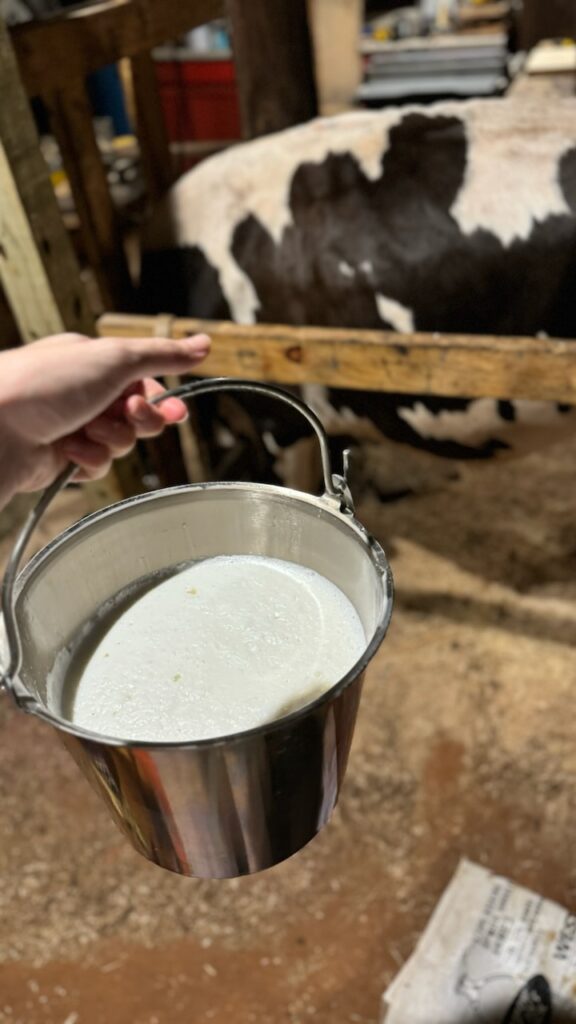
How to handle raw milk properly
Let’s start at the very beginning of the milking process.
Cleaning off your cow to milk.
How you clean off your cow matters. You don’t ever want to milk out of a wet udder. If you clean with a sopping wet rag and get the udder all wet, then that dirty water can keep dripping down into the milk as you’re milking your cow. If you do use rags and soapy water, make sure to thoroughly wring out your rag so it’s just damp. Then you may also want to have a clean dry rag to go over the teats and then the udder again drying it really well. I’ll also do my iodine dip and then dry it off with either paper towel or another clean dry rag.
Equipment
We use stainless steel milking buckets and glass jars to store our milk. Everything in my process can get sanitized in the dishwasher to make sure all the bacteria is gone. I run my buckets and filter funnel through every single day after milking. I also run all my jars through with some extra citric acid (as an acid wash) to make sure I get rid of any buildup of milkstone. Then I put all the equipment away and don’t let it mix with my other kitchen dishes.
When we switch to a machine I’ll have to figure out the best process for cleaning all that since it can’t go through the dishwasher.
Here is where I ordered my seamless stainless steel buckets and filter funnel (with filters). Code WILSONFAMILYHOMESTEAD
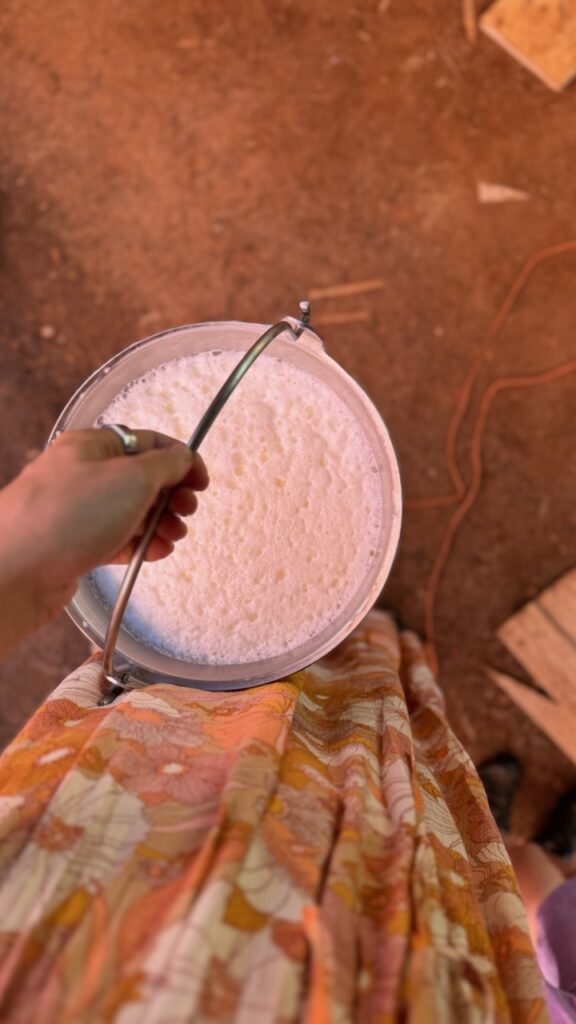
Chilling
One of the most important things is chilling your milk quickly. Sometimes the milk can start to get a “cowy” or “goaty” taste. But if you handle it correctly, that should not be happening. The milk should taste fresh and sweet. The off flavors come from the breaking down of the enzymes in the milk. Enzymes start breaking down immediately so getting the milk chilled completely as fast as possible is very important.
A new thing I started doing a couple months ago that Luke suggested, was freezing my jars beforehand. The day before I sanitize the jars and do the acid wash. Then as soon as they’re cooled off and dry I pop them all in the freezer. In the morning I bring the milk in immediately after we are done with each cow. I strain the milk right into those frozen jars to get the milk a jumpstart on cooling.
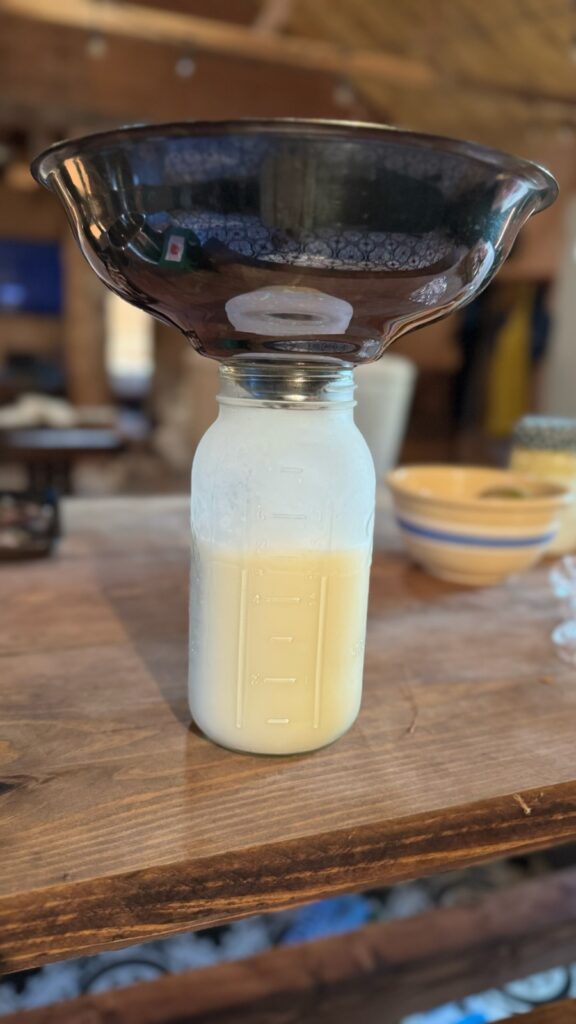
As soon as it’s filtered I put the clean lids on, mark the date and what cow it’s from, and pop it in the freezer.
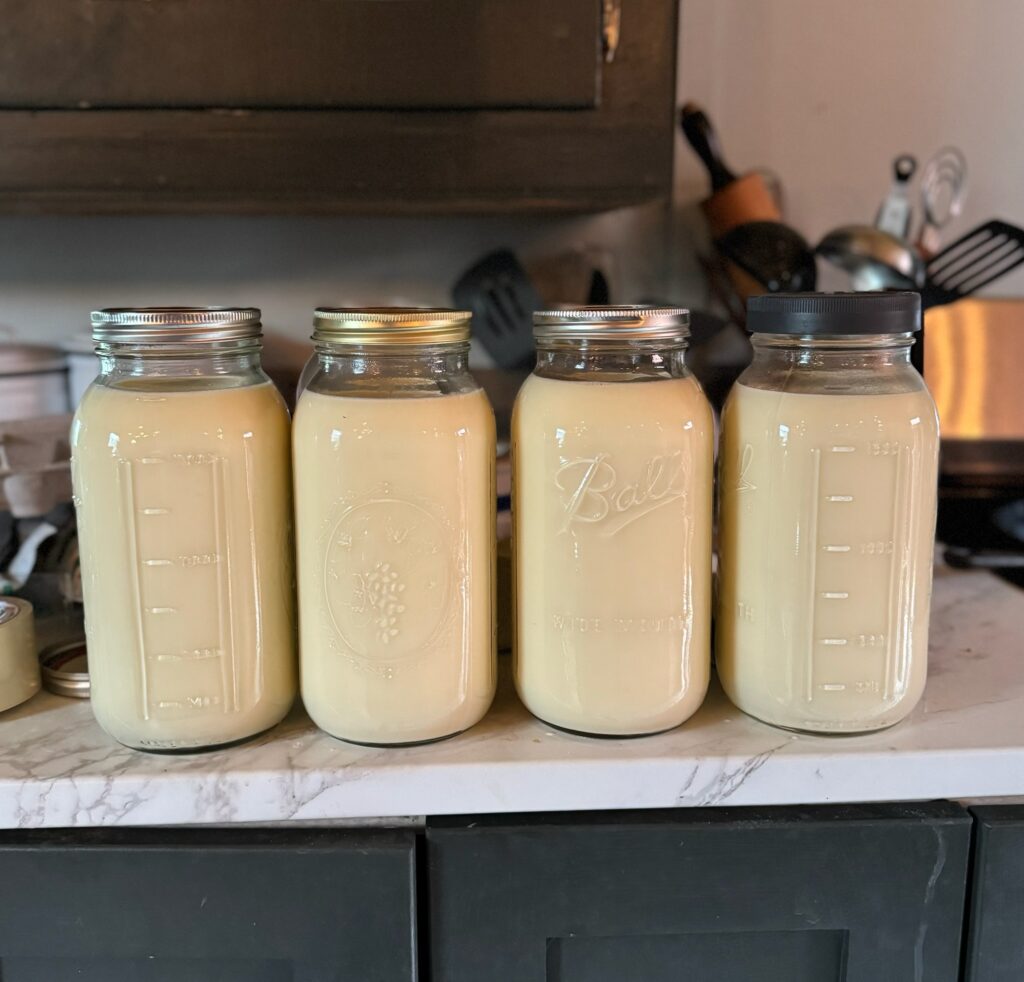
I leave half gallon jars in the freezer for an hour and a half.
Then when the timer goes off I move them into the milk refrigerator for customers to come pick up.
Additional notes
I make sure, especially for customer’s milk, that the lid never gets opened up again while it’s in my possession, I don’t shake it up, I just leave it be.
For our own milk I leave lids sealed until we need to use it. For optimal freshness I make sure that we put the milk back right away after pouring a glass. I wouldn’t really need to do this because we go through milk so fast anyway, but it’s just a good practice.

Then if I’m transporting milk anywhere for customers, I use ice chests with big blocks of ice so the milk doesn’t warm at all while it’s being moved.
Perform tests every now and then
Every couple months (when I can remember to), I’ll take a random jar of milk and write “test” on it. I leave that one in the back of the fridge for a certain amount of time. Usually I leave it for at least 2 weeks. The milk needs to be lasting 2 weeks at a minimum. Sometimes I’ll leave it longer just to see. But I never open the lid until the test is over and I’m going to actually taste the milk. This easy test will give you a good idea of if your practices are good or not.
So just remember, it’s all about cleanliness and fast chilling, those are the most important bullet points to take away.
And blessings.
Pin it for later!
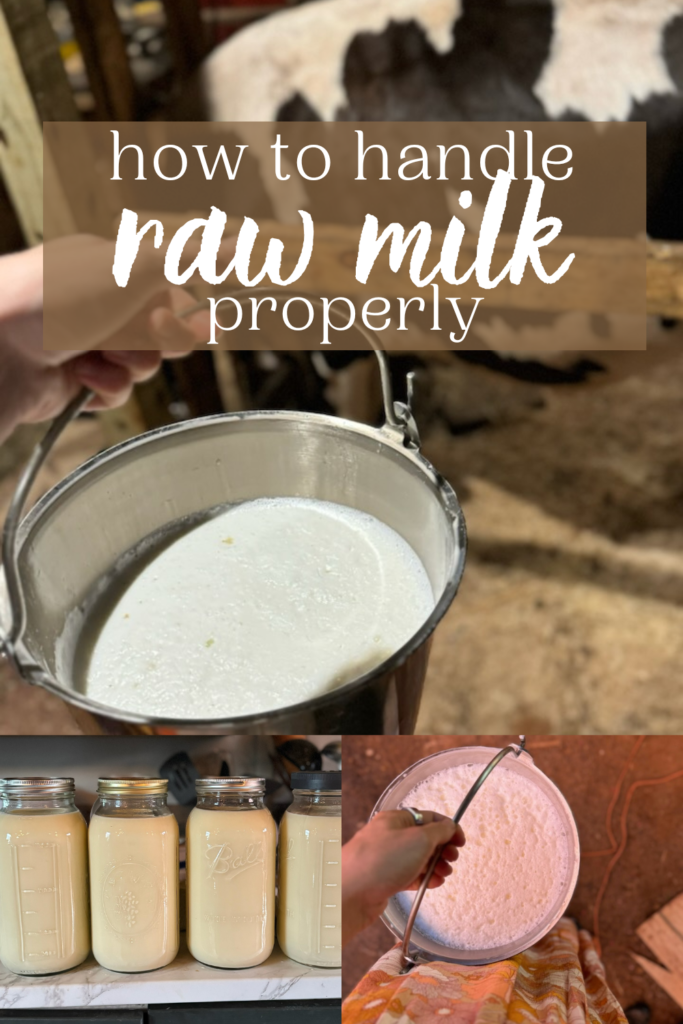

Leave a Reply